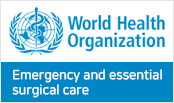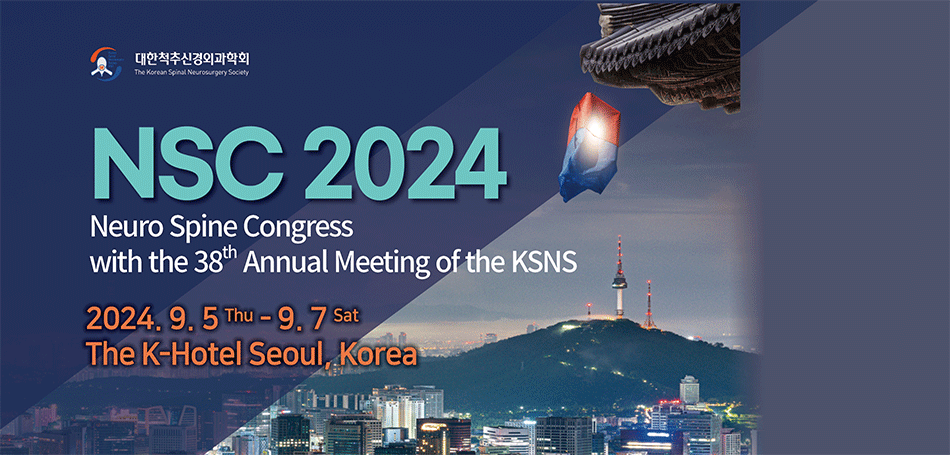
- Search
| Neurospine > Volume 18(4); 2021 > Article |
|
|

The World Federation of Neurosurgical Societies (WFNS) Spine Committee has recently created several consensus meetings using Delphi method and has published new recommendations on specific spinal disorders, such as cervical spondylotic myelopathy, ossification of the posterior longitudinal ligament, lumbar spinal stenosis, cervical spine trauma, and spinal cord injury [1-5]. Though controversy still exists in the optimum treatment of the spinal disorders, a continued high-level research and better reporting of outcomes, however, is necessary to make an optimal management and to work toward more standardized treatments for various spinal disorders.
In the current special issue of the Neurospine, readers will find up-to-date recommendations of the WFNS Spine Committee for the thoracolumbar spine fractures. Six review articles have focused on the epidemiology, classification and radiological diagnosis, outcome factors, indications for nonsurgical treatment, surgical techniques, and posttraumatic kyphosis of the thoracolumbar spine fractures by performing a systemic literature search of the last 10 years, reporting evidence, and producing the recommendations of the WFNS Spine Committee through 2 consensus meetings.
The thoracolumbar spine represents the transitional zone from a rigid segment to a mobile segment, making it very vulnerable to traumatic lesions. Fractures of the thoracolumbar spine are the most frequently injured part of the spine, representing 90% of all spinal injuries, followed by cervical and lastly by lumbosacral spine [6-8]. The average annual incidence of thoracolumbar spine fractures was 30.4 per 100,000 inhabitants and the most frequent etiology was traffic accidents and fell from heights in a Swedish study [9]. Among patients younger than 60 years of age, the annual incidence was 13 per 100,000 and was twice as high in men as in women, the incidence, however, increased steeply with age and in patients 60 years or older, it was higher in women than in men. Lifelong disability following thoracolumbar spine fractures may produce a significant economic burden on relevant society and healthcare funding.
Despite tremendous improvements in spinal imaging and management techniques over the last several decades, there has been still a lack of consensus or no standard guidelines for indications of nonsurgical or surgical treatment, optimal surgical approach and technique, fusion levels, amount of kyphosis correction and factors affecting the clinical outcome of the thoracolumbar spine fractures.
I wish the recommendations of the WFNS Spine Committee in these 6 review articles will be quite helpful to readers in better understanding and improving their treatment strategy for the thoracolumbar spine fractures.
In the conclusion of this editorial, as one of the valued members of the WFNS Spine Committee, I’d like to cherish our friendship and proudly express my deep gratitude to all members of the Spine Committee for their outstanding collaboration and tremendous contributions to the committee and the outcomes.
REFERENCES
1. Costa F, Anania CD, Zileli M, et al. Lumbar spinal stenosis: introduction to the World Federation of Neurosurgical Societies (WFNS) Spine Committee Recommendations. World Neurosurg X 2020 7:100075.



2. Kim SH. Finding a better way to manage cervical spine trauma and spinal cord injury. Neurospine 2020 17:708-9.



4. Zileli M, Fornari M, Costa F. Lumbar spinal stenosis recommendations of World Federation of Neurosurgical Societies Spine Committee. World Neurosurg X 2020 7:100080.



5. Zileli M, Konovalov N, Sharif S. Cervical spine trauma and spinal cord injury recommendations of WFNS Spine Committee. Neurospine 2020 17:704-7.



6. Cahueque M, Cobar A, Zuñiga C, et al. Management of burst fractures in the thoracolumbar spine. J Orthop 2016 13:278-81.



7. Choi JI, Kim BJ, Ha SK, et al. Single-stage transpedicular vertebrectomy and expandable cage placement for treatment of unstable mid and lower lumbar burst fractures. Clin Spine Surg 2017 30:E257-64.



- TOOLS
-
METRICS

-
- 1 Web of Science
- 0 Crossref
- Scopus
- 8,010 View
- 128 Download
-
Journal Impact Factor 3.8
SURGERY: Q1
CLINICAL NEUROLOGY: Q1
- Related articles in NS
-
Optimal Strategies for the Treatment of Osteoporotic Spinal Diseases2023 December;20(4)






























